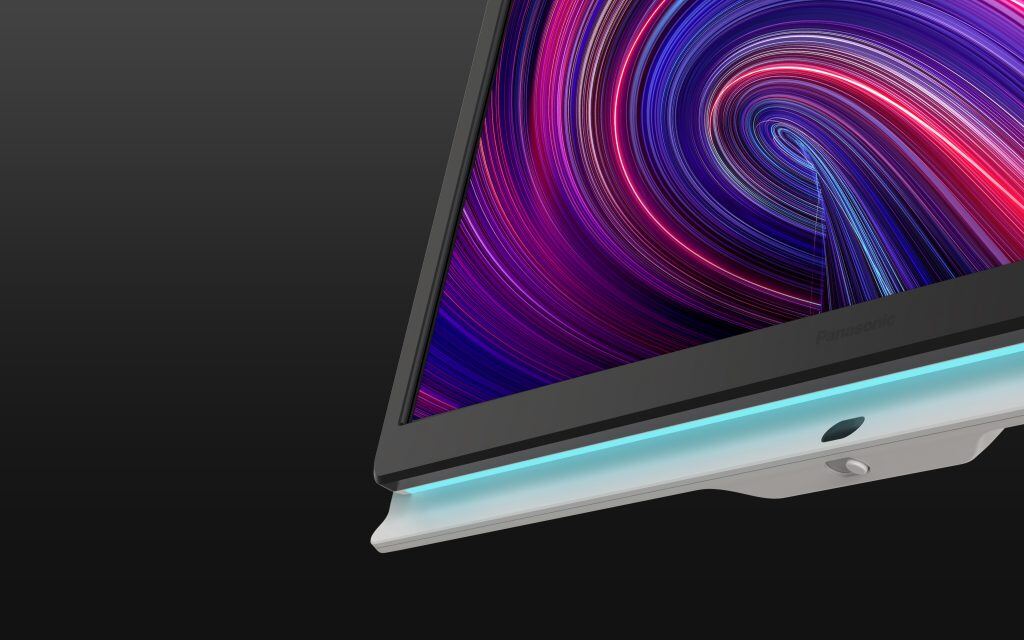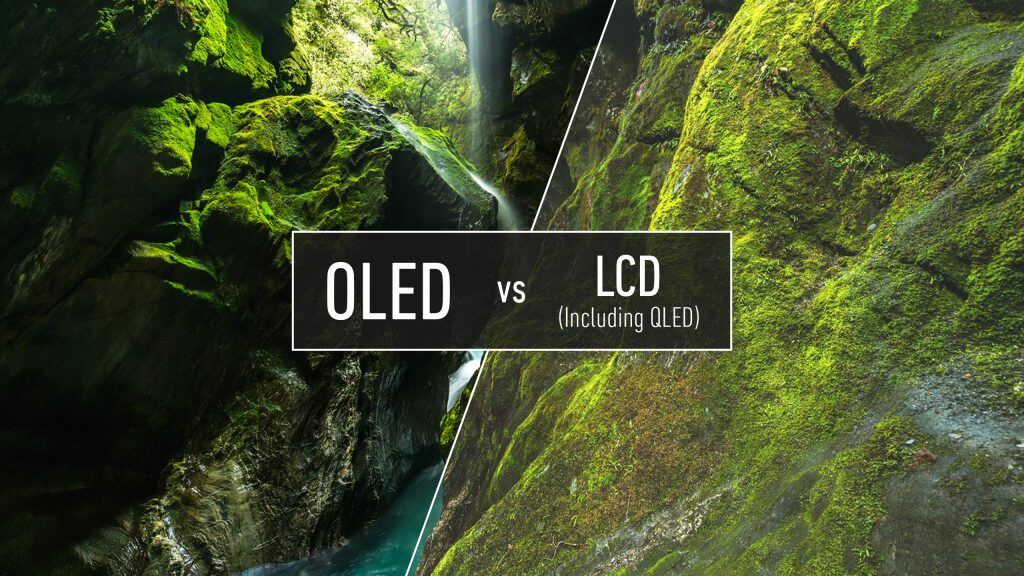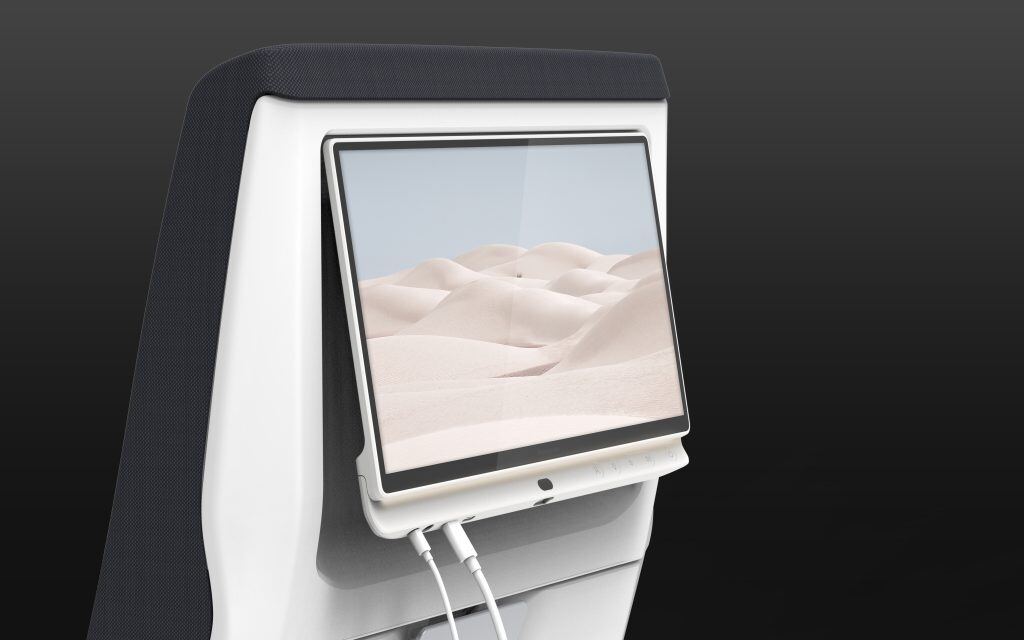Anyone who has shopped around recently for a new HD television, gaming monitor, smartphone, or even a Nintendo Switch can tell you that OLED display technology is definitely having a moment.
Short for organic light-emitting diode, the latest generation of OLED display technology delivers image quality that is sharper, clearer, and with better contrast ratio than anything that has come before. Modern OLED also has the advantage of being thin, flexible, and energy efficient, as well as exceptionally tactile and responsive. These qualities make it an asset to a variety of industries looking to capitalize on lightweight touchscreens.

OLED Myth Busting: Next-gen Improves On Past Problems
Previous generations of OLED displays could have issues with image burn-in in certain circumstances, and shortened lifespan. Gary Kaplan, Product Marketing Manager for In-Flight Systems at Panasonic Avionics, says that those issues are things of the past compared to new OLED technology.
“OLED is better because it provides the absolute best picture quality available, bar none," says Kaplan. “Anyone who first talks about OLED in the context of picture burn-in or short lifespan just isn't informed or aware of the latest OLED technologies being used in current products."
Kaplan explains that there are numerous methods being used now, both in OLED display panel hardware and its control software, that work together to eliminate burn-in entirely. As for lifespan specific to the in-flight context, he says: "The most significant factor that determines lifespan is the display's brightness level during normal operation. In the consumer space, high performance TVs, regardless of their display type, can have illumination levels that are anywhere from 5x to 20x brighter than displays used on an aircraft."
"In a commercial aircraft, the illumination of the display in the cabin isn't nearly as bright and the display isn't driven as hard, so burn-in is eliminated and the longevity of the display panel is greatly extended," Kaplan continues.
As for dust and water intrusion, Kaplan adds that industrial design elements mitigate these issues because of sealed and mounted displays and robust testing and certification standards.
“OLED is becoming a buzzword because the picture quality is stunning and immediately recognizable in terms of picture quality, both contrast and color, so it really gets your attention," says Kaplan, noting that is also why OLED stands out from the pack of LCD technologies, which includes QLED.

OLED vs LCD and QLED
Looking to clear up what he calls the “alphabet soup" of display technologies, Kaplan admits that the differences between OLED, LCD, and QLED can be confusing for many customers. However, OLED is a fundamentally different technology from LCD.
LCD stands for "liquid crystal display." Of the technologies listed here, it is the oldest. LCDs use a backlight or reflector, since liquid crystals do not emit light themselves. Limitations of LCDs include a smaller color spectrum, slower response times, and bulkiness.
LED stands for light-emitting diode. LED technology is usually paired up with LCD or QLED to produce displays. As Digital Trends explains, "when you see the term 'LED TV,' it simply refers to an LED-backlit LCD TV." It's also typically heavier and less energy efficient than OLED.
QLED is a variation of LCD technology. It's the last possible technical improvement to LCD technology. Quantum dots are inside of a film, which are illuminated by a LED backlight. Together, they project colors onto a screen. Because of the backlight, it is considered a transmissive technology.
OLED is an emissive technology in which pixels emit their own light—which is why, Kaplan says, OLED displays can be so thin and lightweight, and can be molded to a variety of shapes.
Aside from producing less glare than screens with top glass, current OLED displays also have faster response times, infinite contrast ratios (perfect blacks), and are more energy efficient than standard LCD and QLED screens.
But perhaps the biggest selling point with next-gen OLED displays, notes Kaplan, is that they meet the APEX HDR brightness and color certification requirements for onboard 4K media.
“So when our airline customers purchase 4K HDR media from Hollywood studios they can be assured that our OLED IFE will accurately display the media in the way in which the filmmakers originally intended," says Kaplan. “That superior contrast with perfect blacks and bright colors delivers better engagement and a better overall passenger experience, which is what airlines are looking for to stand out from their competitors."

OLED Comes of Age
Today's OLED is a mature display technology that has come of age through its time in the market.
But it's just part of a larger ecosystem of displays. While OLED is making waves in the IFE space right now, Kaplan is quick to point out that support for Panasonic LCD IFE systems isn't going anywhere.
“Panasonic has always been in pursuit of a differentiated passenger experience provided by our seatback displays, so naturally LCD is a part of that pursuit and that continues today in our NEXT systems," says Kaplan.
“We were the first to fly with 4K resolution and in our opinion our current 4K LCD displays deliver the best entertainment experience available. That hasn't changed. But we are in constant pursuit of that leading edge in IFE passenger engagement and the future is OLED."



